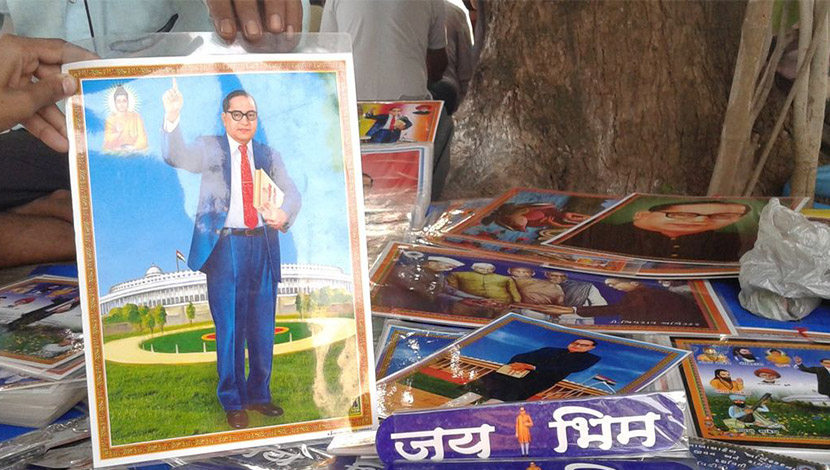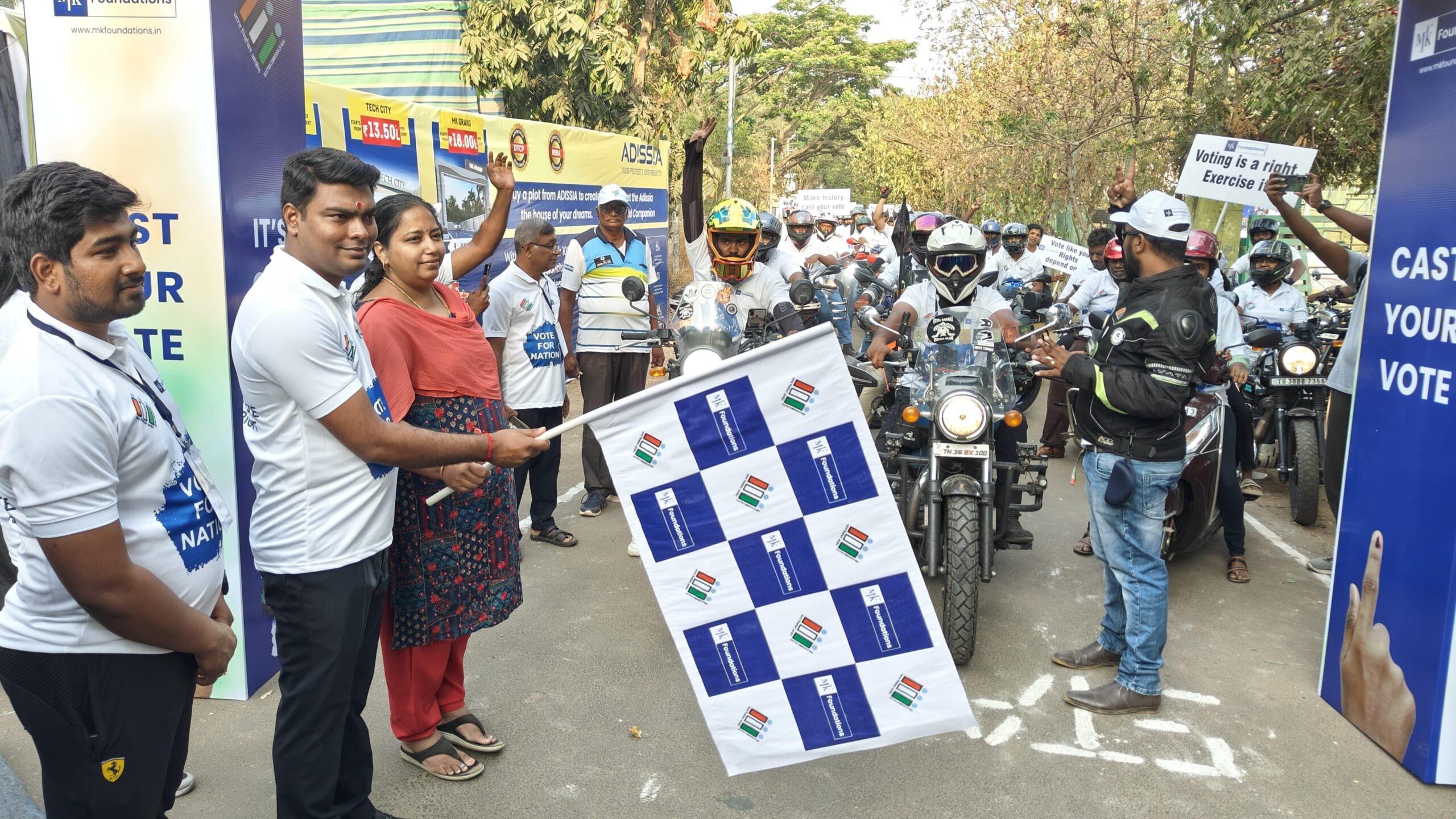Trending Now
- IPL 2024 begins with a bang. First contest between CSK and RCB.
- Election commission allots mike symbol to Naam Thamizhar Katchi
- AIADMK promises to urge for AIIMS in Coimbatore, in its election manifesto.
- Ponmudi becomes higher education minister.
Columns
Next act in Gujarat’s Dalit uprising: Plans for mass conversions to Buddhism
![]() August 19, 2016
August 19, 2016
A month after cow vigilantes assaulted four tanners in Una, more than 60,000 Dalits are set to quit Hinduism at five rallies across the state.
The dusty chowk in Mota Samadhiyala village is rather small, but on the evening of August 13, it was packed with at least 300 Dalits wearing bright blue bands and blue tikas on their foreheads.
Located in south Gujarat’s Una taluka, Mota Samadhiyala is home to the four Dalit tanners who had been brutally assaulted by cow vigilantes on July 11 for skinning dead cattle. The incident sparked an unprecedented response from Gujarat’s Dalits, who have organised dozens of protest events and rallies across the state for the past month.
The protesters assembled in Mota Samadhiyala on August 13 had just finished a 100-km motorcycle rally from Veraval and were now listening to a fervent speech by Keval Rathod, an emerging Dalit leader from the locality.
“How many of you gathered here are Buddhists?” he asked. More than a third of the crowd raised their hands in response.
“But how many of you are officially Buddhists on paper?” Barely 10 or 15 hands rose this time.
Rathod now thundered into the microphone: “Isn’t this a betrayal of Babasaheb Ambedkar, our leader who gave us our rights? If we remain Hindus, our children will never forgive us!”
The cheers that erupted from a large section of the crowd were telling. The Dalit movement triggered by last month’s Una atrocity has not just been a call to fight caste oppression within Hinduism, but a call to abandon Hinduism altogether. Across Gujarat, as various Dalit rights organisations plan strategies and protests to take the movement forward, they are also planning mass conversion events for Dalits to be able to formally accept Buddhism.
At least five such conversion rallies are on the cards between now and December, with more than 60,000 Dalits expected to take diksha into Buddhism.
Set to leave Hinduism
The biggest conversion drive is being planned by the Gujarat Dalit Sangathan, which hopes to bring 50,000 Dalits into the fold of Buddhism at four rallies in October, November and December. While the dates have not been finalised, the functions will tentatively be held in Rajkot, Ahmedabad, Vadodara and Palanpur.
In Amreli district, Dalit rights groups are planning a separate diksha ceremony for another 11,000 people, tentatively on October 14.
Among those set to convert in Amreli is Rameshbhai Rathod from Chalala village. “I have practiced Hinduism all these years but it has given my community nothing by discrimination,” said Rathod, a leather tanner who stopped skinning dead cattle after the July 11 Una atrocity. “Almost all of Amreli’s Dalits have been talking about adopting Buddhism for the past month.”
In Gir Somnath district’s Solaj village, 28-year-old Naresh Chauhan already calls himself a Buddhist. “I have been practicing more of Buddhism than Hinduism for several years already,” said the cement factory labourer who is among the 50,000 enlisted with the Gujarat Dalit Sangathan for conversion this year. “Now I am just waiting to make it formal.”
The Junagadh story
While Dalits across the Saurashtra region seem eager to convert, the enthusiasm is most palpable among those from Junagadh district. In 2013, the Saurashtra Dalit Sangathan had led one lakh Dalits to convert to Buddhism in that district, and memories of that mass ceremony are still ripe.
“I wasn’t wise enough to convert back in 2013, but this time I don’t want to be left out,” said Narendra Makadia, 30, a farm labourer from Junagadh who has also enlisted with the Gujarat Dalit Sangathan for conversion. Last week, Makadia chose to forgo three days of wages so that he could show up for the bike rally and the Independence Day rally in Una.
“I get lower wages than the non-Dalits working on the same farm, and food and water is served separately to me,” said Makadia. “The upper castes don’t talk to our women with respect. Now that this movement has begun, it is more important than ever to show support in every way, including changing our religion.”
Bhupat Rathod, one of the one lakh Gujarati Dalits who adopted Buddhism in 2013, explains why conversion has been such a success in Junagadh. “Awareness of Ambedkarite ideology has been high in our area ever since we experienced inter-caste riots in 1992,” he said. “The upper castes treat us like untouchables, but that year they attacked us for not practicing Hinduism properly. They burnt our shops and stopped our rations, so we also attacked them.”
The untouchability, said Bhupat Rathod, continues even today. Dalit labourers are forced to carry their own cups to work and money is thrown at them instead of being placed in their hands. “With this kind of treatment, I would have been ready to convert to Islam too,” he said. “The gau rakshaks beat up Muslims and Dalits both, but at least they allow Muslims into their homes.”
A 30-day deadline
Una has been the epicentre of the new Dalit uprising taking hold of Gujarat, but within Una taluka, reactions to the call for conversion have been mixed.
Vijay Chauhan, a farm labourer from Una, is determined not to abandon his Hindu faith. “I will protest against atrocities and demand a Hinduism without caste structures, but I will not leave this religion,” he said.
Amiben Charoya, 30, a tanner from Una’s Sachakvad village, had signed up for conversion with the rest of her family, but the Charoyas were not entirely sure of their decision till they attended the Independence Day mega rally in Una city. At the rally, Dalit leader Jignesh Mevani declared that his organisation – the Una Dalit Atyachar Ladat Samiti – would give the state government 30 days to meet their demand of distributing land to landless Dalits. If the demands are not met by September 15, Mevani plans to lead thousands of Dalits in a rail roko protest.
The Charoyas have added their own personal condition to the declaration. “We have always been Ambedkar-following Hindus, but if these demands are not met in 30 days, we will convert to Buddhism,” said Amiben Charoya. “Gau rakshaks have been harassing tanners in our village for the past two years, and now we have given up that work. Now we might give up our religion too.”
‘We will convert even without permissions’
The Dalit movement’s attraction to conversion is inspired, of course, by Bhimrao Ambedkar’s famous mass conversion ceremony in 1956, when he rejected Hinduism by leading 600,000 followers to adopt Buddhism.
Switching religions today, however, is fraught with challenges in several Indian states that have anti-conversion laws. The Gujarat Freedom of Religion Act of 2009 makes it mandatory for citizens to get the district authority’s permission before converting to another faith. But since then, the state has approved just half of the conversion applications it received, and according to Dalit activists, a large number of applications are not even accepted.
The Gujarat Dalit Sangathan, however, plans to go ahead with its conversion rallies regardless of the restrictions of the law. “The 50,000 Dalits who have signed up for taking diksha with us have already filled in conversion application forms with the government,” said Ashok Samrat, the co-founder of the Sangathan. “But we will continue with the conversions even if permission does not come through. In fact, this time we will challenge the state’s anti-conversion law in court if they try to stop us.”






















